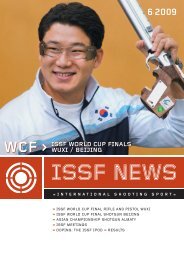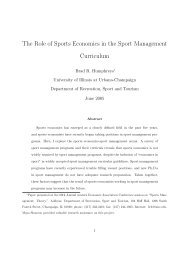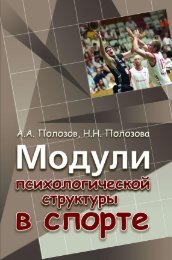Totally Tae Kwon Do Magazine - Issue 17 - Usadojo
Totally Tae Kwon Do Magazine - Issue 17 - Usadojo
Totally Tae Kwon Do Magazine - Issue 17 - Usadojo
You also want an ePaper? Increase the reach of your titles
YUMPU automatically turns print PDFs into web optimized ePapers that Google loves.
ITF <strong>Tae</strong>kwon-<strong>Do</strong> <strong>Tae</strong>kwon <strong>Do</strong> & Sine Wave as<br />
“Sequential Motion”<br />
More More Power Power Than Than What What Meets Meets The The Eye Eye<br />
This clearer insight into <strong>Tae</strong>kwon-<strong>Do</strong>’s past<br />
and a proposed future by a former member<br />
made big impressions on me. On a very<br />
practical level I surrendered to the evidence<br />
that ITF style was more powerful than what I<br />
had been practicing. Simplified, but<br />
stronger. The power of the ITF style was<br />
achieved at the expense of leaving aside<br />
“advanced” uses of patterns, but the result<br />
was good. It was the time for me to<br />
incorporate that<br />
into my training,<br />
to learn the other<br />
side of the coin.<br />
Since then I have<br />
found out other<br />
interesting<br />
qualities of ITF<br />
style by meeting<br />
masters that<br />
deserted the<br />
organization long<br />
ago (special<br />
credit to Master<br />
Mark Giambi,<br />
student of Master<br />
Kong Young Bo),<br />
as well as very<br />
proficient current<br />
members. I have tried to separate purely<br />
commercial updates from useful martial-artbased<br />
concepts. At this point I am<br />
By Manuel E. Adrogué 1<br />
Part 3<br />
In this three-part series the author discusses technical reasons underlying<br />
the transformation of Shotokan / Korean Karate technique into<br />
Chang Hon (ITF style) <strong>Tae</strong>kwon-<strong>Do</strong>, and shares his personal story on<br />
how an inquisitive attitude, the exposure to certain martial arts icons<br />
and diligent training gradually changed his perception of <strong>Tae</strong>kwon-<strong>Do</strong><br />
technique as it relates to power and speed.<br />
With Masters Mark Giambi and Kong Young Bo (2003)<br />
convinced that the essence of ITF <strong>Tae</strong>kwon<br />
-<strong>Do</strong> basics is maximum power through<br />
acceleration in an elastic, relaxed whip-like<br />
technique.<br />
The <strong>Tae</strong>kwon-<strong>Do</strong> insistence on relaxation is<br />
not only explained in terms of the so-called<br />
Theory of Power, but probably in the<br />
Korean approach to sparring: the ability to<br />
change the direction of techniques, or<br />
transform them<br />
into different<br />
motions amidst<br />
combat, typically<br />
needed in the<br />
continuous type<br />
of sparring used<br />
in <strong>Tae</strong>kwon-<strong>Do</strong>,<br />
asks for relaxed<br />
motions. In other<br />
aspects, some<br />
apparent internal<br />
contradiction<br />
marks ITF style:<br />
<strong>Tae</strong>kwon-<strong>Do</strong><br />
sparring and<br />
patterns function<br />
as<br />
complementary<br />
opposites.<br />
Shotokan Karate-type sparring actually<br />
works within the same logic of its basics and<br />
forms: two karateka will face each other<br />
<strong>Totally</strong> <strong>Tae</strong> <strong>Kwon</strong> <strong>Do</strong> - 13

















